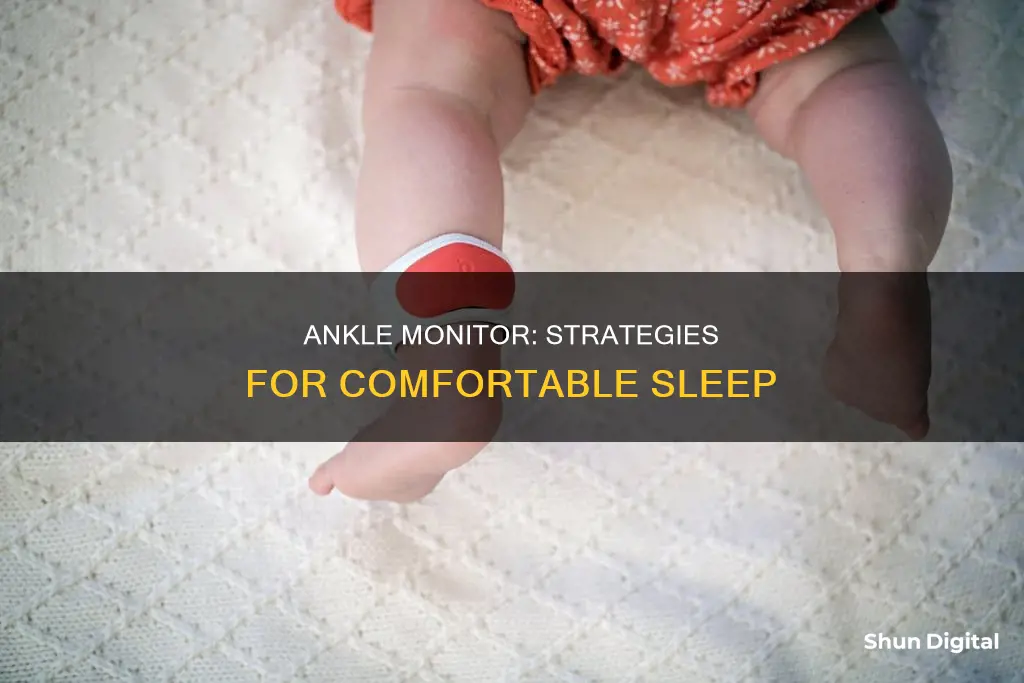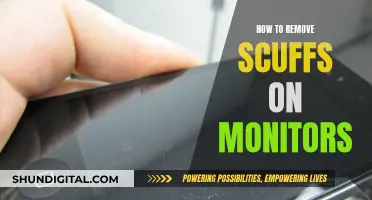
Ankle monitors are a common tool used by law enforcement to track the movements of individuals on probation, parole, or house arrest. While they are meant to allow for some freedom of movement within defined boundaries, they can also be a source of discomfort and stigma for those who wear them. The monitors are equipped with GPS capabilities and send alerts if the individual breaches predetermined boundaries or exclusion zones. They must also be charged daily, which can be a source of anxiety for the wearer, as failing to do so could result in a return to prison. The constant surveillance and restrictions on movement can impact the wearer's ability to sleep, work, and socialise.
| Characteristics | Values |
|---|---|
| Purpose | Track the movements of individuals on probation, parole, or house arrest |
| Attachment | Securely fastened to an individual's ankle |
| Functionality | GPS positioning, RF technology, data transmission, tamper detection |
| Alerts | Triggered when the device is tampered with, when the individual enters exclusion zones, or when the battery is low |
| Charging | Requires daily charging, with alerts sent if the battery gets too low |
| Range | RF ankle monitors have a limited range from the receiver installed in the individual's home |
| Comfort | May cause physical discomfort or stigma |
What You'll Learn

Charging the ankle monitor
Charging Routine:
- Establish a daily charging routine for your ankle monitor to ensure it maintains adequate power. Aim to charge it at the same time each day to make it a habit.
- The ankle monitor should be charged for approximately two hours every day. Set aside this time specifically for charging to avoid interruptions.
- Choose a convenient location for charging, such as near an electrical outlet or power source, to ensure the charging process is uninterrupted.
Cordless Charging:
- If you have a GPS tracker, you will likely be provided with a cordless charger. This allows for more freedom of movement during the charging process.
- To use the cordless charger, simply unplug it from the power lead and attach it to the base of the tracker. This enables you to continue your daily activities within your home environment while the device charges.
Charging Indicators:
- The charging process will typically take around two hours to complete. Keep an eye on the "Power" light on the charger, which will turn from red to green when the battery is fully charged.
- Additionally, the tracker will vibrate when connected to and disconnected from the charger. This feature helps you confirm that the charging process has started and been completed successfully.
Low Battery Alerts:
- The tracker is designed to alert you when the battery level is low. It will vibrate to indicate that immediate charging is required.
- Take these low battery alerts seriously and initiate the charging process as soon as possible to avoid a complete battery drain.
Charging Tips:
- Always follow the instructions provided by the relevant authorities or the manufacturer regarding charging and maintenance.
- Do not leave the address or move outside the permitted area while the cordless charger is attached to your tracker.
- Avoid exposing the equipment to extreme heat or cold, and do not submerge it in water during the charging process.
By following these instructions and maintaining a consistent charging routine, you can ensure that your ankle monitor remains functional and compliant with the conditions of your sentence or order.
Connecting OptiPlex 7010: Easy Monitor Setup Guide
You may want to see also

Clothing to wear with an ankle monitor
When it comes to clothing, there are a few things to keep in mind when wearing an ankle monitor. Firstly, it is important to wear loose-fitting clothing that does not constrict the device. This will help to prevent chafing and skin irritation. Long, loose trousers or skirts can also help to conceal the monitor if desired.
Additionally, as the monitor is strapped to the ankle, it is important to ensure that the clothing does not interfere with the device's function. The monitor should be secure and locked in place, with the band snug but not too tight to avoid discomfort or restricted blood flow.
The type of ankle monitor may also impact clothing choices. For example, RF monitors, which use radio frequency technology, may require a receiver to be installed in the home. This could mean that wearing certain types of shoes, such as thick-soled boots, might interfere with the signal and should be avoided.
Furthermore, as part of the conditions of wearing an ankle monitor, individuals may be required to refrain from drinking alcohol. This means that clothing with pockets or hidden compartments that could conceal alcohol containers should be avoided.
Finally, ankle monitors can cause physical discomfort and stigma for some wearers. Choosing comfortable clothing and shoes that accommodate the monitor can help to reduce any additional discomfort.
Eliminating Ghosting on Your Monitor: Tips for a Clear Display
You may want to see also

Ankle monitor weight
The weight of an ankle monitor depends on the type and make of the device. Ankle monitors are usually lightweight, but some people may find them uncomfortable or stigmatizing.
The G737 ankle bracelet, for example, weighs 200 grams with the battery. Other ankle monitors may be slightly larger and heavier, resembling the size of a deck of cards.
While the weight of an ankle monitor may not be significant, the constant carrying of the device can cause discomfort for some individuals. The tight strap of the monitor can dig into the leg, and the heavy box can weigh down on the ankle. This physical discomfort is one of the limitations of ankle monitors as a monitoring tool.
To alleviate the discomfort caused by the weight and fit of the ankle monitor, some people have tried wrapping a sock around their ankle beneath the monitor strap. However, this can be mistaken for an attempt to tamper with the device, which is not allowed.
In conclusion, while the weight of ankle monitors may vary, the constant presence and weight of the device on the ankle can cause physical discomfort for some individuals, impacting their experience of wearing an ankle monitor.
Best Places to Buy In-Ear Monitors: A Guide
You may want to see also

Ankle monitor pain
Ankle monitors are devices used by law enforcement to track the movements of certain individuals, such as those on probation, parole, or house arrest. While they serve an important purpose in the criminal justice system, they have also been associated with physical discomfort and even pain for those who wear them.
Wear Loose-Fitting Clothing
It is advisable to avoid tight or constricting clothes around the monitor. Instead, opt for loose-fitting garments that allow for breathability and comfort. This will help prevent chafing and skin irritation, which can further aggravate the pain.
Use Lotion
Applying moisturising lotion to the skin surrounding the monitor can be beneficial. This helps to keep the skin hydrated and supple, reducing the chances of dryness, irritation, and discomfort.
Check the Fit
It is crucial to ensure that the monitor fits snugly but is not overly tight. You should be able to move your ankle freely without the device slipping off. A secure yet comfortable fit will help minimise pain and irritation.
Use Moleskin
Moleskin, a soft adhesive padding available at most drugstores, can be a useful tool. Apply it to your skin before putting on the anklet. This will not only help keep the monitor in place but also provide a layer of cushioning to reduce direct contact with your skin.
Use Wrist Sweatbands or Socks
Placing a wrist sweatband or a sock between the monitor and your skin can provide additional cushioning. This can help reduce the impact of the anklet on your ankle bones and minimise pain, especially if you engage in running or other physical activities.
Charge Regularly
Most ankle monitors require daily charging to function effectively. It is important to establish a consistent charging routine to ensure the device is adequately charged. This will help you avoid the stress and potential consequences of a low battery, such as unexpected alerts to the authorities.
Seek Adjustments or Alternatives
If the pain persists or becomes unbearable, it is important to seek assistance. Contact the relevant authorities or your probation/parole officer to discuss possible adjustments or alternative options to alleviate the pain.
While ankle monitors can be a source of discomfort, employing these strategies can help make the experience more bearable and reduce the impact on your daily life.
Where is My ASUS Monitor Serial Number?
You may want to see also

Ankle monitor alerts
Ankle monitors are typically used as an alternative to incarceration, allowing people awaiting trial, serving probation or parole, or facing immigration proceedings to remain at home while their case is ongoing. These electronic monitoring devices use GPS tracking systems to record the wearer's location and can be set up with specific limitations on how long the person can stay outside and where they can go.
While the use of ankle monitors has increased as a way to reduce prison populations, particularly during the COVID-19 outbreak, there are concerns about their effectiveness and the potential for false alerts. Ankle monitors can be set off accidentally, for example, by water damage or malfunction, leading to false alarms that can result in further punishment and even incarceration for minor technical violations.
In the case of Shannan Davis, a 43-year-old woman from Michigan, her ankle monitor started beeping for no apparent reason after she returned from the doctor, causing her distress as she feared she would be arrested. This example highlights the stress and anxiety that can be caused by the constant threat of potential alerts and the consequences that may follow.
To avoid setting off an ankle monitor, it is important to be aware of any specific restrictions or limitations that have been set. These may include boundaries that the wearer must not cross, as well as time limits on how long they can remain outside their home. Additionally, taking care to avoid water damage and handling the device with care can help prevent accidental alerts due to malfunction.
Monitoring Data Usage: Turning Off Application Tracking
You may want to see also
Frequently asked questions
Ankle monitors are devices used by law enforcement to track the movements of individuals on probation, parole, or house arrest. The monitor is attached to the individual's ankle and sends signals about their location and movements. To sleep with an ankle monitor, ensure you are within the permitted range and that the device is charged.
If the ankle monitor is causing discomfort, try wearing a sock underneath the strap to alleviate the pain. Additionally, ensure you are wearing loose-fitting clothing to bed to avoid drawing attention to the device.
In the event of a power outage, seek alternative power sources such as a power inverter or generator to ensure the device remains charged. If you experience any technical issues with the ankle monitor, contact the relevant authorities immediately to avoid potential violations.
Yes, it is important to stay within the permitted range of movement. Going beyond this range can trigger an alarm and result in legal consequences. Additionally, ensure you are adhering to any other conditions of your release or probation, such as curfews and approved locations.







